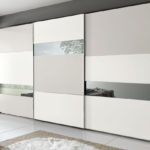The same disposable tableware can be both harmful and safe. Much depends on the type of plastic from which it is made and on the purpose. For example, do not pour hot drinks on a picnic in polystyrene cups, as toxins are released into tea or coffee. And alcohol must not be poured into polypropylene containers, since there is a risk of damage to the liver or kidneys.

Plastic damage
Plastic consists of many dishes, disposable and reusable. Most often, whatever the kind of plastic, it does not react with food substances, but this does not always happen.

Some molecules in the manufacture of plastics remain active and can enter the human body with drinks or food, especially those that have a high temperature.

Plastic utensils are not recommended to be reused, as they contain stabilizers, salts of heavy metals and other toxic substances released during heating.

But there are dishes made from acrylic and styrene, which is intended for constant use. It cannot be heated, but can be washed by hand or in a dishwasher. Dishes made of polypropylene can also be reusable.

The most dangerous is melamine tableware. Melamine is a chemical substance from which formaldehyde resin is obtained. Unscrupulous manufacturers produce cups and spoons with a high amount of formaldehyde, which is prohibited by the standards. Some strengthen dishes with asbestos fibers, which has long been recognized as a carcinogen.

The use of melamine plates under hot leads to the release of formaldehyde. Also, some manufacturers make drawings on dishes with paints containing lead.

Another common material for plastic utensils is polyvinyl chloride, which is valued for its lightness, strength and low cost, as well as for aesthetic qualities. But few know that this substance is subject to rapid decay and the release of toxins into the environment.
Many doctors are trying to dissuade the population that plastic dishes are dangerous. But with daily use, small doses of toxins accumulate in the body and lead to diseases.

Plastic dishes can be used sometimes, but not as a permanent alternative to porcelain or ceramics. It is impossible to clean and disinfect plastic properly, therefore, bacteria gather in addition to toxins in its pores.

-
 When an adjustable floor is more profitable than a capital screed
When an adjustable floor is more profitable than a capital screed
-
 What mistakes are made when the radiator is connected diagonally?
What mistakes are made when the radiator is connected diagonally?
-
 What are the consequences of building a site without permission?
What are the consequences of building a site without permission?
-
 What errors lead to water hammer in the heating system and how to avoid them
What errors lead to water hammer in the heating system and how to avoid them
-
 Why does the grinder work, but the disk does not spin
Why does the grinder work, but the disk does not spin
-
 What could cause the cabinet door to bend
What could cause the cabinet door to bend
-
 5 reasons to change the wizard without waiting for the repair to finish
5 reasons to change the wizard without waiting for the repair to finish
-
 How to cut tiles without dust
How to cut tiles without dust
-
 How to cut a fiberboard with a flat edge with a regular grinder
How to cut a fiberboard with a flat edge with a regular grinder
-
 Why you should not put aluminum radiators on central heating
Why you should not put aluminum radiators on central heating
-
 Why you can not allow for flaws in the installation of roof nodes from corrugated board
Why you can not allow for flaws in the installation of roof nodes from corrugated board
-
 What boards can not be used for half-timbered
What boards can not be used for half-timbered
New publications are published daily on our channel in Yandex. Zen
Go to Yandex. Zen


